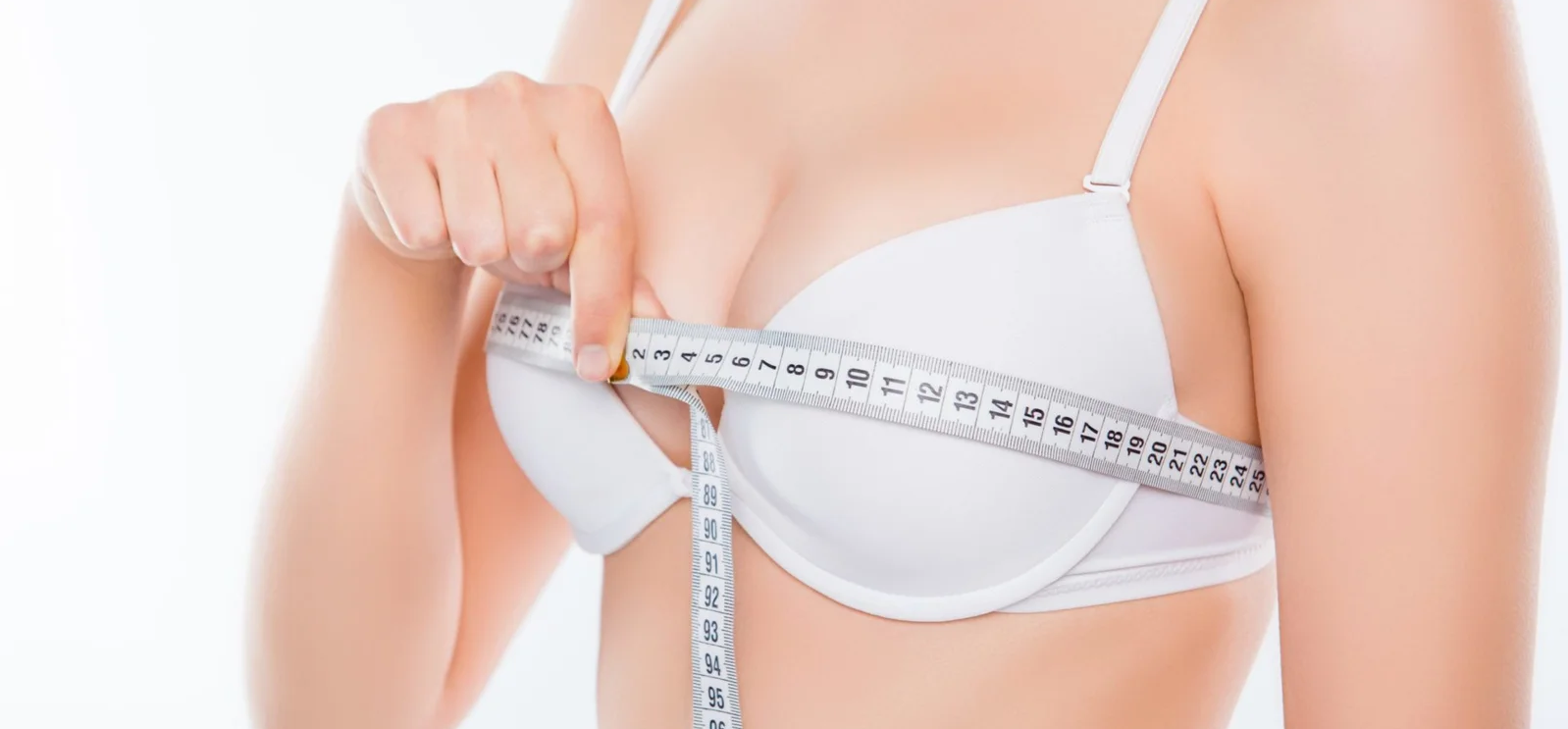
Breast Implants
Breast Volume Augmentation – Breast Implants
Dr. Ouakil, a plastic surgeon in Paris with over 30 years of experience in breast surgery, offers all techniques for breast volume augmentation with implants.
Learn in detail about breast implant placement, indications, the procedure, potential outcomes and complications, and pricing.
Reasons for consultation for breast implant placement:
- treatment of underdeveloped breasts during growth (breast hypotrophy)
- aesthetic breast augmentations related to a complex regarding femininity
- breast asymmetries
- tuberous breasts
- breast ptosis requiring, in addition to breast augmentation, a breast lift
Who is breast implant placement for?
The breast augmentation procedure is indicated in 4 main situations:
Breast Hypotrophy
This concerns young women, often slim, who have had insufficient development of their breast tissue during puberty and desire a "normal" breast size. The placement of a breast implant will provide the desired volume and shape. It is suggested to combine this with lipomodeling (lipofilling of the breast), which proves very useful in this indication to optimize the natural appearance.
In some cases, despite thin tissues, it may be possible to propose placement in front of the muscle by performing a lipofilling of the breasts simultaneously with the placement of breast implants.
Partial coverage by social security is possible if the cup size is less than A, meaning in cases of nearly non-existent breasts.
Moderate Breast Ptosis and Glandular Atrophy
This applies to women who have had multiple pregnancies or have lost a significant amount of weight. The breasts are then flat and rest on the upper part of the abdomen. The goal will be to lift the breast by filling the upper quadrant and to make the breast firmer, which has lost its tone. Only small degrees of breast ptosis can benefit from augmentation with implants without an associated lift.
Aesthetic Breast Augmentation
This concerns patients in a purely personal and aesthetic approach. The volume of the breasts may be deemed sufficient, but the desire for an even more feminine breast is expressed. An implantation will then be decided, tailored to the patient's wishes and the pre-existing breast.
Breast Asymmetry
Implants of different sizes or shapes can be placed on each side. Coverage by social security is possible if the difference is at least one cup size. Lipofilling in addition to breast implants represents an interesting option for reshaping and symmetrizing the breasts.
Tuberous Breasts
In consultations, there are many more pseudo-tuberous cases than true malformative tuberous breasts (which alone can benefit from coverage).
Can breast implants be placed before pregnancy? Can one breastfeed with breast implants?
Yes, because the prosthesis is located behind the breast gland or behind the pectoral muscle. The gland functions normally, and pregnancy is possible. Breastfeeding is allowed but may be compromised if the incision is trans or peri-areolar. A submammary scar will have no consequences.
Since pregnancy often leads to changes in the breasts, it is advisable to postpone the procedure if pregnancy is planned within the next 12 to 24 months.
What are the different types of breast implants available?
There are different types of implants based on:
- Composition: silicone, saline solution, hydrogel, polyurethane (prohibited in France since 2019).
- Shape: round, anatomical (practically abandoned).
- Surface: smooth, nano/micro-textured, textured (prohibited since 2019).
See the article on the different techniques for placing breast implants.
What is the lifespan of a breast implant?
The average lifespan is 10 to 12 years. Regular monitoring is essential (annual consultation starting from the 3rd year, ultrasound every 2 years). Saline implants deflate immediately in case of rupture, posing no danger.
An implant is never permanent: a change is to be expected after 10-20 years.
How does the procedure take place?
Under general anesthesia, with prior mammography and ultrasound. Hospitalization for 12 to 24 hours. Incisions: axillary, lower hemi-areolar, or submammary. Positions: retro-muscular (dual plane) or retro-glandular/fascial.
Elastic bandage, then a supportive bra or medical bra with breast support to be worn for several weeks. Drainage: rarely, small drains connected to an external bottle, removed before discharge.
What are the postoperative outcomes?
Painful outcomes, especially if the implant is retro-muscular. Antibiotics and painkillers prescribed. Prohibition on lifting weights, raising arms, or driving for 8 days. Minimum work stoppage: 5 days. Resumption of sports: after 6 weeks.
Risks: hematoma, infection, capsule, displacement.
What is the follow-up?
Clinical monitoring + ultrasound every 2 years. Mammography possible. Experienced radiologists.
Long-term health risks
Late rupture possible. Siliconoma only in case of long-neglected rupture. No link with breast cancers. Rare: anaplastic large cell lymphoma (especially textured implants).
Final Result
Result stabilizes in 3 months, after swelling reduction and softening. Rare risk of capsule (2-3%).
In conclusion
Breast augmentation often combines implants + lipofilling. A safe technique, natural results thanks to the current quality of implants, provided there is regular follow-up.
